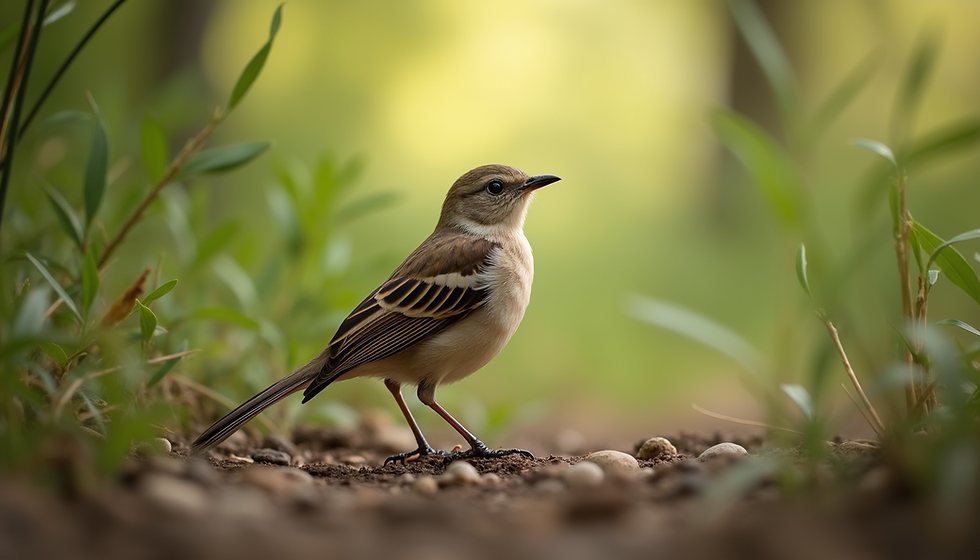Chair's Report 2024-25 AGM
- Esperance Wildlife Sanctuary Inc.

- Oct 16
- 3 min read
CHAIR’S REPORT
It is with immense pride and gratitude that I present the Chairman’s Report for Esperance Wildlife Sanctuary Inc. (EWS) for the period ending June 30, 2025. This year will forever be marked as the moment our long-term vision came to fruition, transforming our dedicated property into a comprehensive regional conservation and wildlife care hub.
A Year of Transformation: The Launch of the Hospital
The central achievement of the 2024–2025 year was the official establishment and opening of the Esperance Wildlife Hospital. This facility, which commenced operation in 2025, is a monumental accomplishment, fulfilling the urgent need for a dedicated, non-metropolitan wildlife hospital in Western Australia.
Thanks to the generous support of the DPIRD and physical efforts and personal financial contributions of Lori-Ann Shibish and Colin Ingram, plus critical infrastructure donations from Southern Ports, the Shire of Esperance, and the Esperance Bay Rotary Club of, the hospital is fully equipped to provide 24-hour emergency triage, stabilisation and advanced care.
In its initial weeks of operation, the hospital swiftly demonstrated its necessity, admitting patients ranging from orphaned ducklings and raptors to disoriented seabirds and injured macropods. By the end of the financial year, we were already tracking toward a significant annual patient load, underscoring our vital role as a safety net for native fauna across the Goldfields-Esperance region.
Wildlife Rescue and Rehabilitation
While the facility is new, the work is ongoing. Our DBCA licensed volunteer carers continued to provide essential services throughout the year.
Key operational highlights included:
Regional Reach: Providing expert triage and transfer support across a vast region (from the Nullarbor to Kalgoorlie to Hopetoun), often working in close partnership with Swans Veterinary Services and other wildlife care facilities.
Penning Expansion: The construction of 100 square meters of specialised penning a small flight aviary in late 2024 allowed us to increase our capacity for long-term rehabilitation and pre-release conditioning for larger birds.
Capacity Building: Through DPIRD funding, we successfully ran two specialist training courses—Basic Handling and Rescue Techniques for Seabirds and Oiled Wildlife Response—training over 40 community volunteers, significantly boosting regional preparedness for environmental emergencies. We also engaged with Scadden Primary School to teach the student how to plant Hakeas.
Habitat Regeneration and Biodiversity
Our commitment to the land remained as steadfast as our commitment to the wildlife. The EWS property, overlooking the Lake Warden wetlands, is an essential ecological corridor.
Planting Success: We continued our intensive revegetation program, focusing on strengthening the corridor between Lake Warden and Pink Lake. This year, we added 800 more native seedlings (mostly local endemic) with the three-year total exceeding 3,000 native plants, including vital food sources for the endangered Carnaby's Black Cockatoo.
Weed Eradication: We maintained rigorous invasive species removal programs targeting Freesias, Gazania, Victorian Tea Tree and bridal creeper, ensuring the survival of the thriving native understorey, which now includes eight flourishing orchid species.
Water Security: The EWS is not connected to mains water and relies entirely on rainwater for its operations. In 2024 we improved our water security by adding 5 x 14,000 litre rainwater tanks to support the hospital, plant nursery and revegetation projects.
Miyawaki Method: Planning commenced in early 2025 for a targeted Miyawaki-style revegetation project, promising rapid, dense forest growth to further enhance the wildlife habitat in the coming year. Broad mulching of replanted areas occurred for the first time this year.
Education Extension: We engaged with Scadden Primary School to teach the student how to plant Hakeas to commemorate the 10th anniversary of the devastating Scadden/Esperance Bushfires.
Financial and Governance Strength
EWS maintained exemplary standards of governance throughout the year. We are now fully registered with the ACNC as an Incorporated Association and were successfully granted Deductible Gift Recipient (DGR) status in June 2025. This critical endorsement ensures that our conservation mission can be sustained by making public donations tax-deductible.
It is important to acknowledge that the entirety of our operational, rescue, and regeneration work is powered by our dedicated team of 100% volunteers and board members. Their tireless efforts represent hundreds of hours of donated service, which is the true backbone of this association.
On behalf of the Board, I would like to acknowledge the untiring work of Lori-Ann and I extend my profound gratitude to the Esperance community, our incredible volunteers, local partners (Swans Veterinary Services, Shire of Esperance, Bunnings) and all our major grant providers. Your support has transformed an aspiration into a tangible reality for wildlife conservation on the South Coast of Western Australia.
Signed,
Colin Ingram
Esperance Wildlife Sanctuary Inc.






Comments